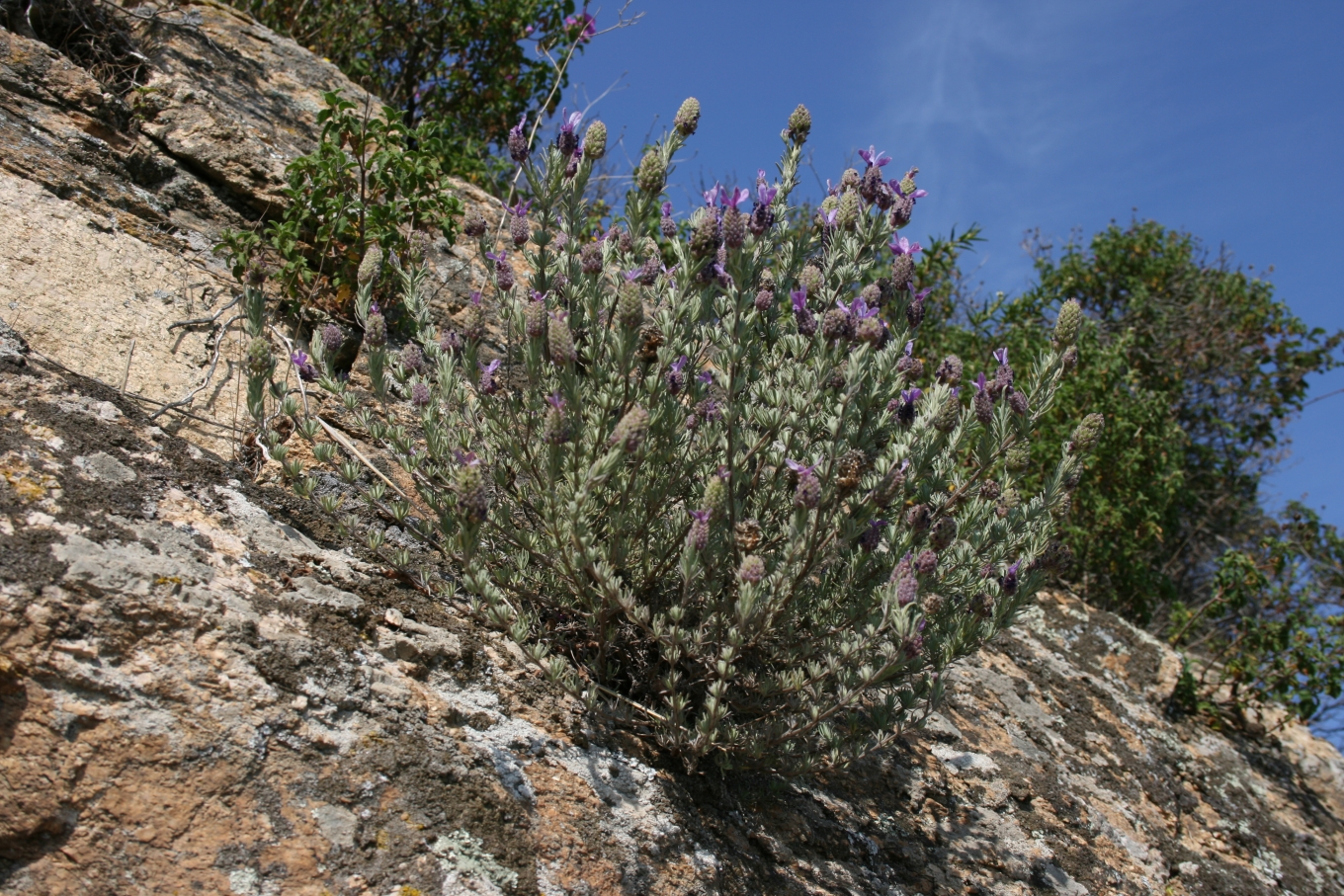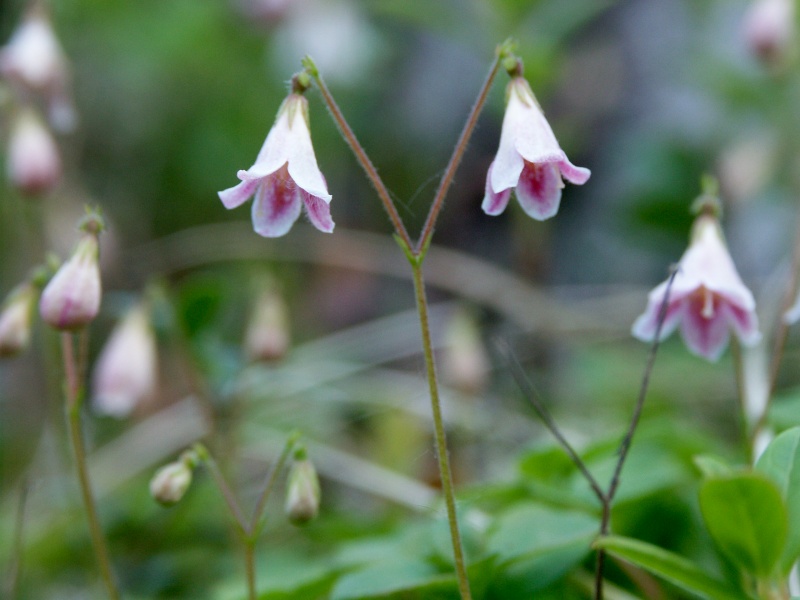Subshrub on:
[Wikipedia]
[Google]
[Amazon]

 A subshrub (
A subshrub (
 A subshrub (
A subshrub (Latin
Latin ( or ) is a classical language belonging to the Italic languages, Italic branch of the Indo-European languages. Latin was originally spoken by the Latins (Italic tribe), Latins in Latium (now known as Lazio), the lower Tiber area aroun ...
''suffrutex'') or undershrub is either a small shrub
A shrub or bush is a small to medium-sized perennial woody plant. Unlike herbaceous plants, shrubs have persistent woody stems above the ground. Shrubs can be either deciduous or evergreen. They are distinguished from trees by their multiple ...
(e.g. prostrate shrubs) or a perennial
In horticulture, the term perennial ('' per-'' + '' -ennial'', "through the year") is used to differentiate a plant from shorter-lived annuals and biennials. It has thus been defined as a plant that lives more than 2 years. The term is also ...
that is largely herbaceous
Herbaceous plants are vascular plants that have no persistent woody stems above ground. This broad category of plants includes many perennials, and nearly all annuals and biennials.
Definitions of "herb" and "herbaceous"
The fourth edition of ...
but slightly woody at the base (e.g. garden pink and florist's chrysanthemum). The term is often interchangeable with "bush".Jackson, Benjamin, Daydon; A Glossary of Botanic Terms with their Derivation and Accent; Published by Gerald Duckworth & Co. London, 4th ed 1928
Because the criteria are matters of degree (normally of height) rather than of kind, the definition of a subshrub is not sharply distinguishable from that of a shrub; examples of reasons for describing plants as subshrubs include ground-hugging stems or low growth habit. Subshrubs may be largely herbaceous though still classified as woody, with overwintering perennial woody growth much lower-growing than deciduous summer growth. Some plants described as subshrubs are only weakly woody and some persist for only a few years. Others, such as '' Oldenburgia paradoxa'' live indefinitely (though is still vulnerable to external effects), rooted in rocky cracks.
Small, low shrubs such as lavender, periwinkle, and thyme
Thyme () is a culinary herb consisting of the dried aerial parts of some members of the genus ''Thymus (plant), Thymus'' of flowering plants in the mint family Lamiaceae. Thymes are native to Eurasia and north Africa. Thymes have culinary, medici ...
, and many shrub-like members of the family Ericaceae
The Ericaceae () are a Family (biology), family of flowering plants, commonly known as the heath or heather family, found most commonly in acidic and infertile growing conditions. The family is large, with about 4,250 known species spread acros ...
, such as cranberries and small species of '' Erica'', are often classed as subshrubs.
Definition
A chamaephyte, subshrub or dwarf-shrub is a plant that bears hibernating buds on persistent shoots near the ground – usually woody plants with perennating buds borne close to the ground, usually less than above the soil surface. The significance of the closeness to the ground is that the buds remain within the soil surface layer and are thus somewhat protected from various adverse external influences. Accordingly, the chamaephyte habit is especially common in stressful environments, for example: * ecosystems on nutrient-poor soils or rock * exposed alpine or arctic ecosystems where seasonal or perennial wind and freezing conditions are prone to kill vulnerable growing shoots * ecosystems subject to frequent fires and burning, where many species of e.g. '' Banksia'' or ''Eucalyptus
''Eucalyptus'' () is a genus of more than 700 species of flowering plants in the family Myrtaceae. Most species of ''Eucalyptus'' are trees, often Mallee (habit), mallees, and a few are shrubs. Along with several other genera in the tribe Eucalyp ...
'' regrow from a lignotuber or caudex.
* heavily grazed or overgrazed ecosystems, such as tortoise turf
Examples of chamaephytes
The term chamaephyte is most formally used within the context of Raunkiær plant life-forms' classification. Examples of chamaephytes are many of the species living in the maquis shrubland and other plants of submediterranean dry ecosystems (species such as thyme, ''Thymus vulgaris
''Thymus vulgaris'' (common thyme, German thyme, garden thyme or just thyme) is a species of flowering plant in the mint family (biology), family Lamiaceae, native plant, native to southern Europe from the western Mediterranean to southern Ital ...
'', and rosemary, '' Salvia rosmarinus''); others include heather species (e.g. '' Calluna vulgaris'' and '' Ericas''), African wild olive ('' Olea europaea'' ssp. ''cuspidata'') and edelweiss ('' Leontopodium alpinum''). Chamaephytes also include cushion plants.
See also
* Raunkiær plant life-form *Shrub
A shrub or bush is a small to medium-sized perennial woody plant. Unlike herbaceous plants, shrubs have persistent woody stems above the ground. Shrubs can be either deciduous or evergreen. They are distinguished from trees by their multiple ...
* Prostrate shrub
*Woody plant
A woody plant is a plant that produces wood as its structural tissue and thus has a hard stem. In cold climates, woody plants further survive winter or dry season above ground, as opposed to Herbaceous plant, herbaceous plants that die back to t ...
References
{{botany Plant life-forms Plant morphology Mediterranean forests, woodlands, and scrub Plants by habit